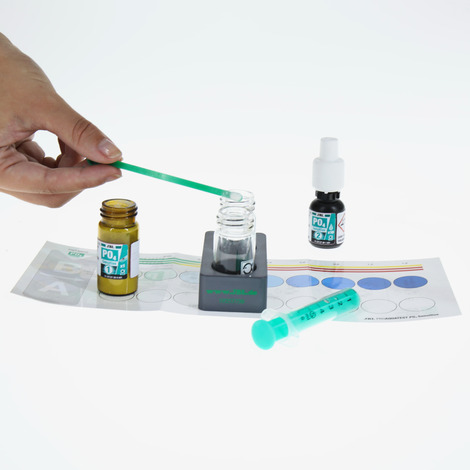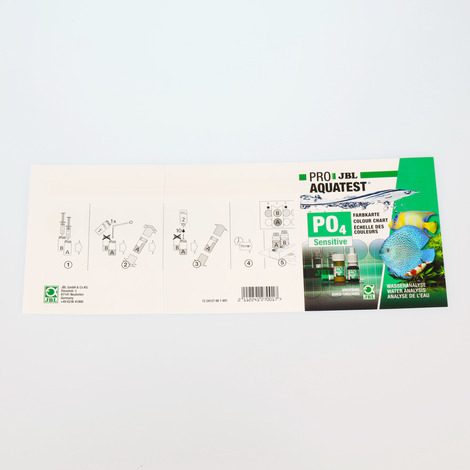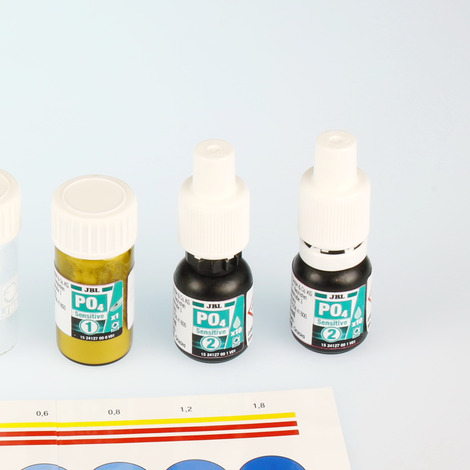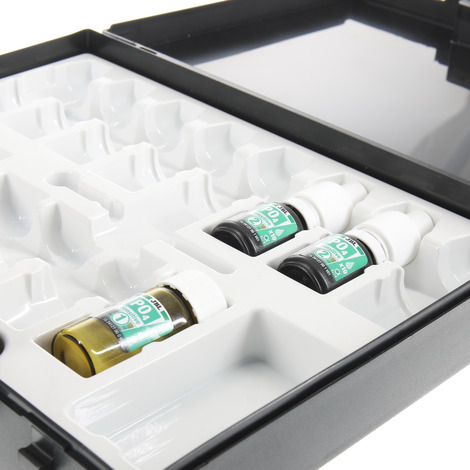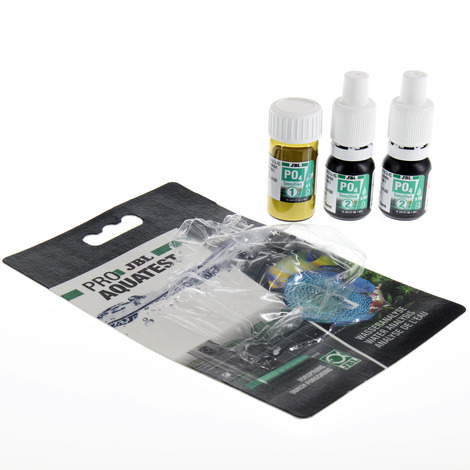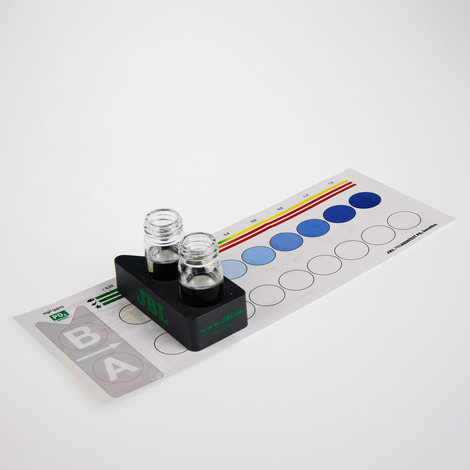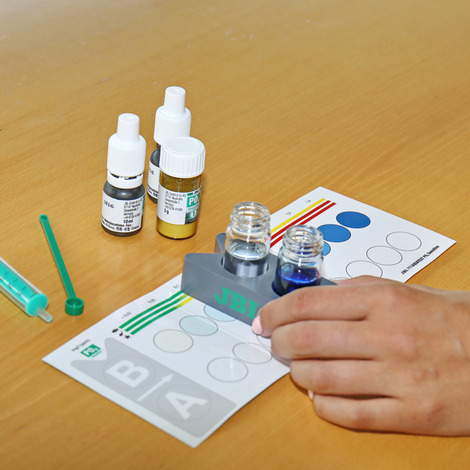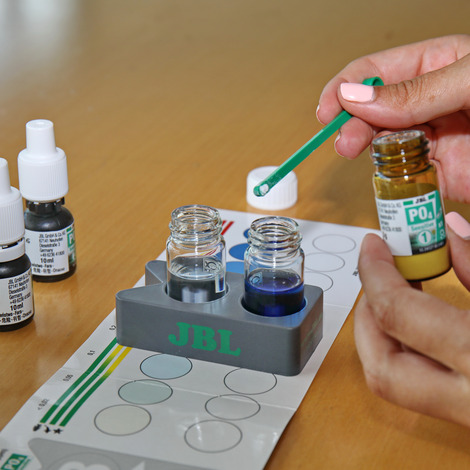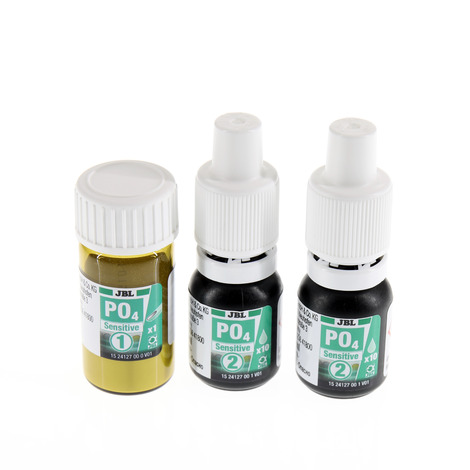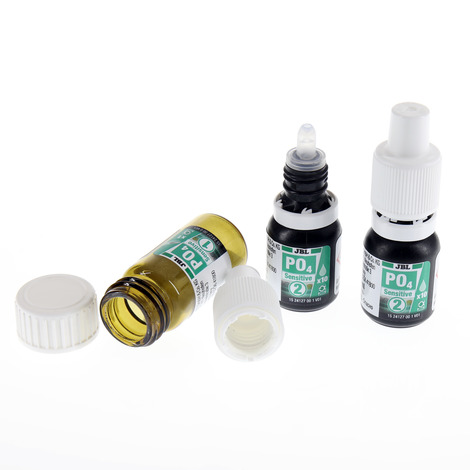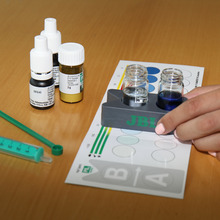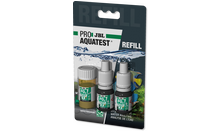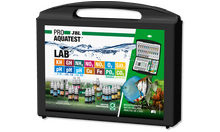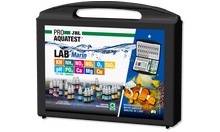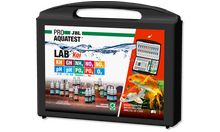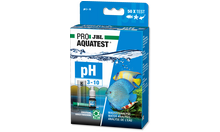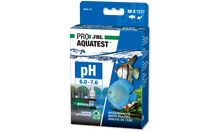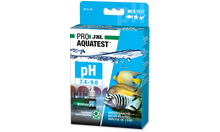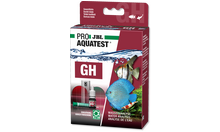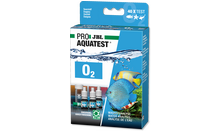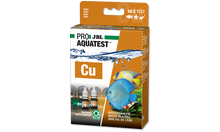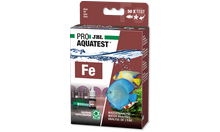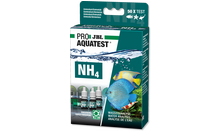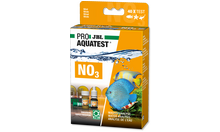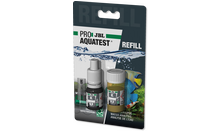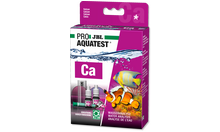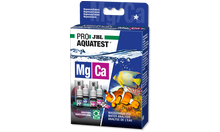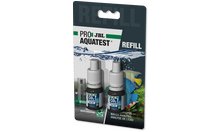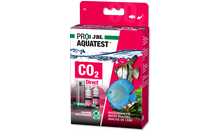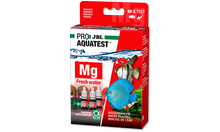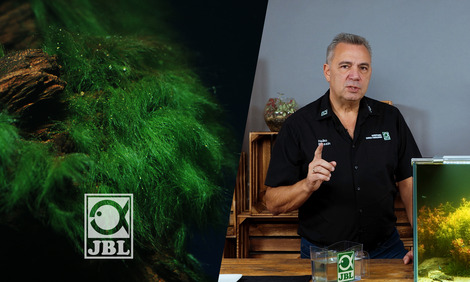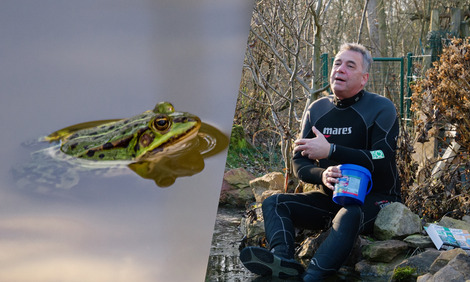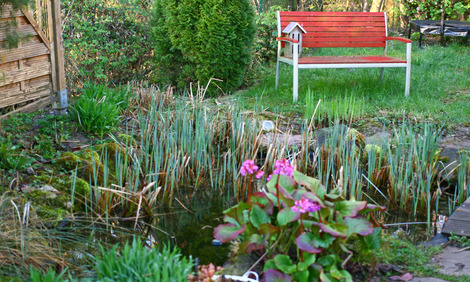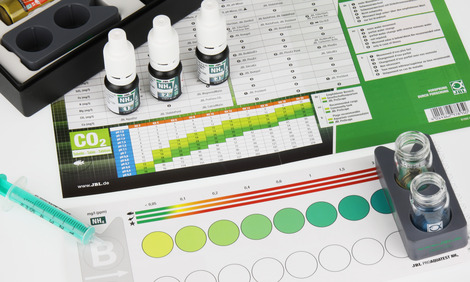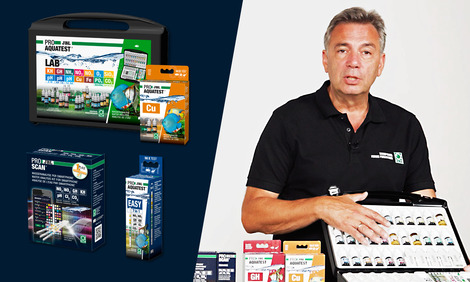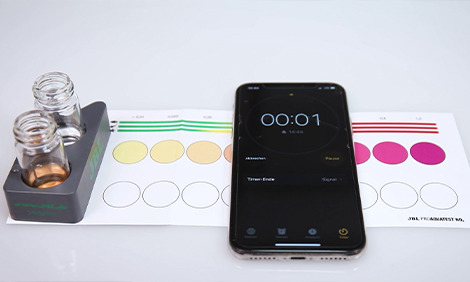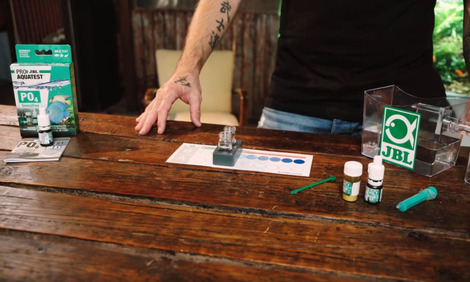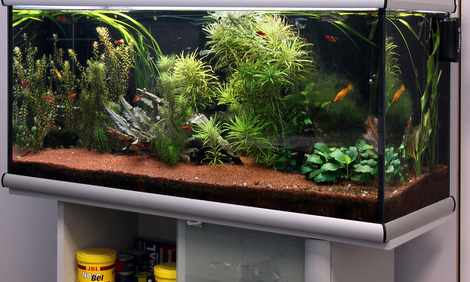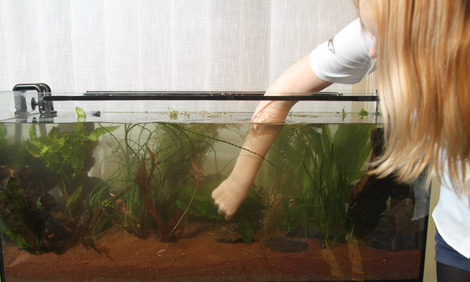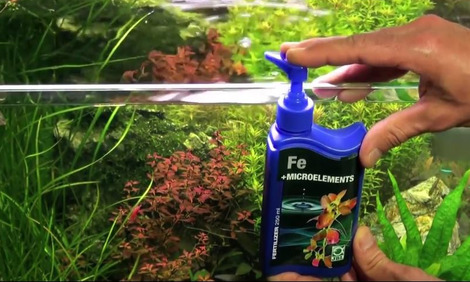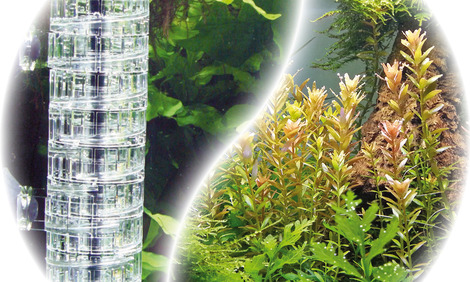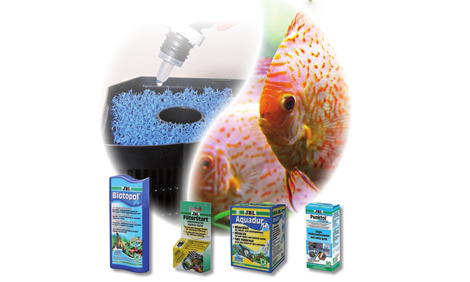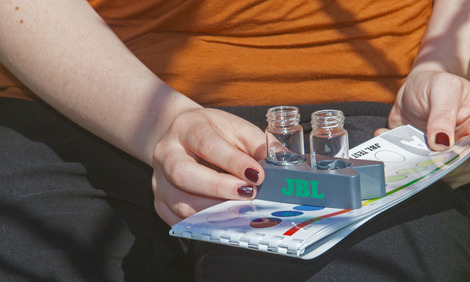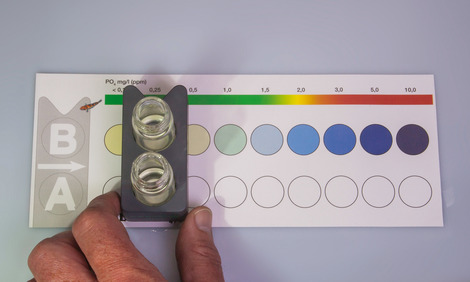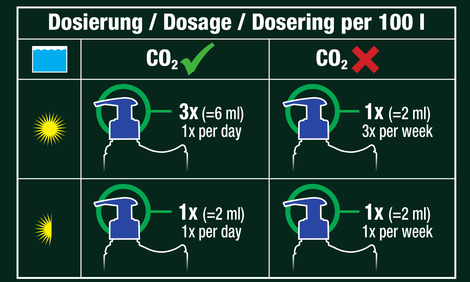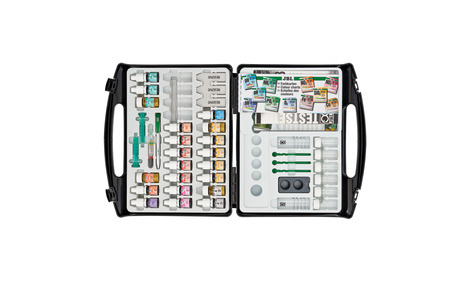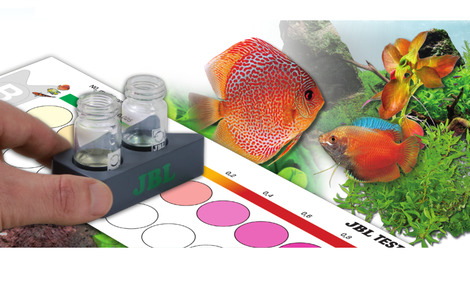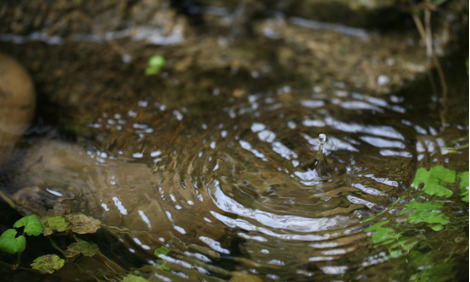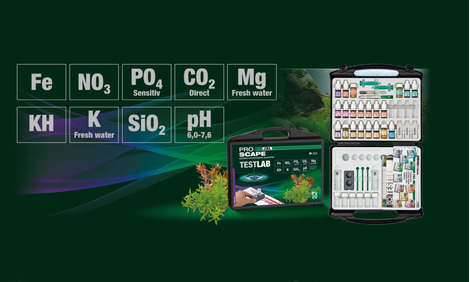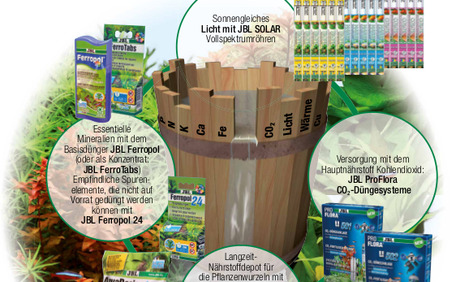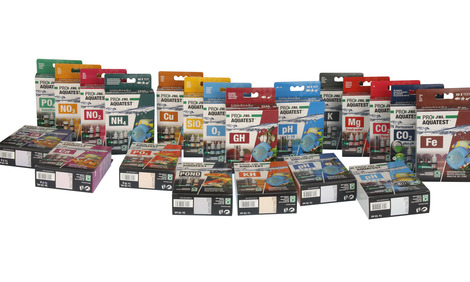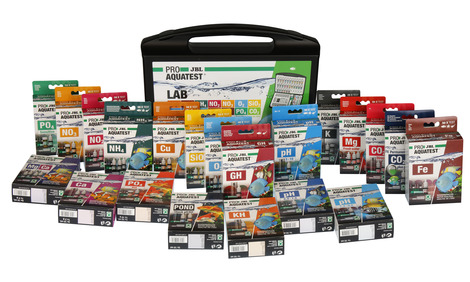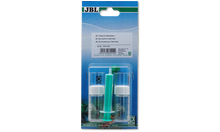Healthy aquarium/healthy pond with conditions close to nature
The right water values depend on the fish stock and the plants in the aquarium/pond. Even if the water looks clear it can be contaminated. With bad values diseases or algae can appear in the aquarium/pond. To maintain a healthy aquarium/pond with conditions close to nature it is important to check and adapt the water values regularly.
For each water analysis JBL provides water tests in the form of quick tests or colour change tests. These determine a certain value or several values in one go. With these water tests you can recognise algae problems and negative nitrate, nitrite, potassium, magnesium values etc.
Why test?
In an aquarium, phosphate primarily enters the water as a result of the digestive processes of the fish or in the form of food remains. In ponds, phosphate primarily enters the water as a result of leaves and dying pond plants/algae. If conditions are unfavourable, the phosphate levels may reach values that are sometimes 100 times higher, and more, than natural levels. Undesirable algae will then multiply exponentially as an inevitable consequence.
Recommended phosphate values:
Freshwater aquarium (community aquarium): 0-0.4 mg/l
Lake Malawi/Lake Tanganyika aquarium: 0-0.4 mg/l
Plant aquarium with few fish (aquascaping): 0.1-1.5 mg/l
Marine aquarium: 0-0.1 mg/l
Pond: <0.05 mg/l
JBL PROAQUATEST PO4 Phosphate Sensitive
Quick test to determine the phosphate content in fresh and marine water aquariums and ponds
- Determines the phosphate value for perfect plant growth or possible cause of algae growth in freshwater/marine water & ponds
- Laboratory comparator system to compensate the inherent water colour: fill glass vials with sample water, add reagents to a vial, place vials in holder, read values off colour chart
- Use: when setting up a new freshwater or marine aquarium: once a week. With algae problems and for checking tap water
- You will find detailed information and troubleshooting tips about water analysis on the JBL website in Essentials/Aquarium or Pond
- Package contents: 1 test kit for approx. 50 measurements, incl. 3 reagents (2x reagent 2), 2 glass vials with screw caps, syringe, dosing spoon, comparator block and colour scale. Reagent refill separately available


